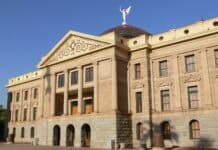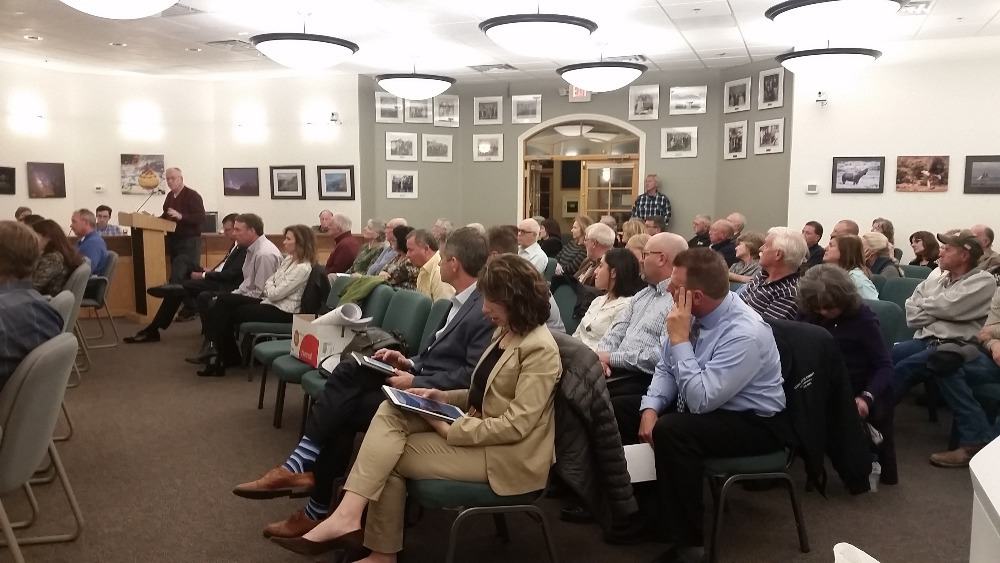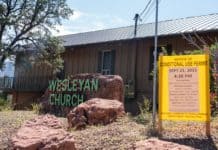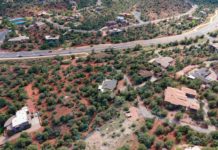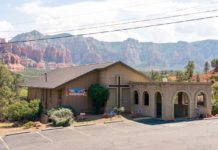A proposed underground water tank off State Route 179 was given the green light, and if all goes as planned, ground will be broken in about a year.
By the 4-1 vote on Tuesday, Oct. 16, the Sedona Planning and Zoning Commission approved a Conditional Use Permit request from Arizona Water Co. to build a 1.5-million gallon water tank off Mallard Drive.
Commissioner Gerhard Mayer was the dissenting vote while Chairman Marty Losoff and Commissioner Larry Klein were excused from the meeting.
The hearing was a continuation following three hours of presentations and public feedback on Aug. 21.
An appeal can be made in writing within 15 days of the commission’s decision. It would then be placed on a future Sedona City Council agenda for action.
The next steps, barring any appeals, would be for AWC to finalize their design plans and begin to address the conditions that were applied, which speak to items such as the preparation of final stormwater management plans. They would then submit for building and ADOT right-of-way permits.
AWC was requesting approval for a new public utility and public service substation, water tank and pumping plant on just over an acre of land the company purchased six years ago.
A city staff report states that this site is zoned residential and is surrounded by residential-zoned properties, which conditionally permits public utility and public service substations, water tanks and pumping plants. The applicant took into account the surrounding residential development in the creation of the design for the proposed water tank and booster facility on the site.
“The proposal meets or exceeds the minimum setbacks and addresses the two feet of additional height through alternate standards,” the report states. “The proposed structure on top of the water tank does not include many windows in order to address sound mitigation and security of the materials inside the structure. The above grade structure as proposed meets the city’s regulations with regard to design and fenestration minimum requirements.”
AWC representatives have said that a water resource master plan concluded that the east Sedona area needs additional storage capacity in order to make sure the community is reliably and adequately served for both resident and commercial use, as well as meeting requirements set by the Sedona Fire District.
Since the August meeting, and at the request of the commission, AWC made a handful of modifications to the overall project design. These include reducing the square footage of the above-grade structure from 2,350 square feet to 1,533 square feet. This results in a reduction of the above-grade site coverage to 3.4 percent.
In addition, they broke the previously proposed building into two separate smaller solid masses connected by a trellis covering. The newly-designed structure has been shifted to the eastern edge of the tank, which will provide greater separation of the above grade portions of the proposed development from the existing and future residential structures on the adjacent properties. AWC also agreed to lower the buildings by 18 inches and preserve many of the trees on the parcel.
It will take and estimated three to four months to excavate the dirt and rock in order to build the underground tank. This will equate to 1,200 to 1,500 trips to take the rock to an undetermined location. The entire project could take up to 18 months.
AWC has said that it wants to be as good of neighbors as possible, which is why, unlike all their other tanks in Sedona, they chose to place this one underground with a house-like appearance above. They have also said they will do everything they can to mitigate noise during construction and blasting, reduce dust and repair any damage to roads that may occur. As for drainage, they will install retention basins and a manhole to help reduce the flow of water during heavy storms.
Based on comments from several residents of that area, as well as attorney Whitney Cunningham, who is representing five homeowners, the biggest concern is stormwater runoff from the project, as well as construction noise and impacts and loss of tax revenue and property value. Those Cunningham represents hired an engineer to dispute many of the claims made by AWC, specifically in terms of potential flooding.
“The biggest concern is runoff,” Cunningham said. “If you approve this project, homes will flood.”
Those opposed suggested that if this proposed location were to be denied by the city, it could be moved a half mile toward Sedona on land owned by the U.S. Forest Service because all private property opportunities had been exhausted. According to a letter to AWC from District Ranger Nicole Branton, of the Red Rock Ranger District, this is not necessarily the case.
“Even if P&Z chooses not to issue a permit for the project at the Mallard/179 location, that would not necessitate the Forest Service permitting construction on the National Forest,” she wrote in an email dated Oct. 15. Commissioner Eric Brandt said he understands the concerns of those in the area but that this project meets requirements within the city’s Land Development Code. “We need to remember this tank is underground,” he said. “The impact to putting it underground is greater and will be greater for the neighborhood but ultimately it will be out of sight.”


